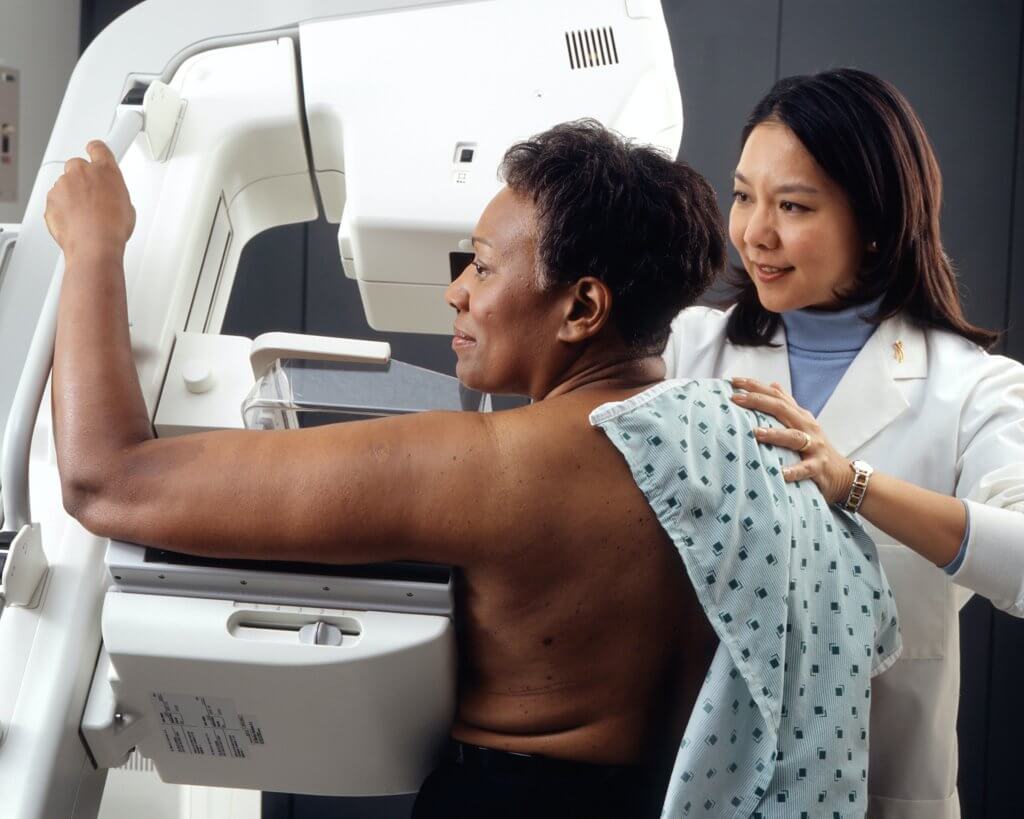LONDON — British scientists believe they have a way to prevent a “time bomb” of breast cancer cells from suddenly activating months and even years later. Breast cancer cells that spread to the lungs can lie sleeping for years before “waking up” as incurable secondary tumors, the new study reveals. However, researchers are now one step closer to stopping the resurgence.
For the first time, Institute of Cancer Research oncologists put the secondary cancer growth down to molecular changes in the lung — resulting from aging. By blocking the changes using pre-existing cancer medicine, the researchers managed to “significantly reduce” secondary cancer growth.
Protein PDGF-C often increases in our lungs as we get older. The team found that it influences whether inactive breast cancer cells stay asleep or “wakes up.” Scarring or damaging PDGF-C could also accelerate dormant cancer cells growing into secondary breast cancer.
During the study, scientists blocked PDGF-C activity using an existing cancer medicine, imatinib, used for chronic myeloid leukemia patients. As a result, secondary cancer growth was “significantly reduced.”
For years, patients with the most common type of breast cancer, estrogen receptor positive (ER+), face a continuing risk that their cancer will return in another part of their body — even after the original diagnosis and treatment.
Cancer patients see hope of preventing cancer reoccurrence
Rachel Davies, a 38-year-old Swansea mother, suffering from ER+ breast cancer praised the research into secondary cancer growth because she could “never be complacent” that her cancer wouldn’t return. The cancer patient underwent a mastectomy, lymph node removal, chemotherapy, and radiotherapy after receiving her diagnosis in 2021. In May 2022, three months after finishing treatment, she was told the cancer had spread to her sternum and later her spine. Currently, she receives targeted cancer drug ribociclib, hormone therapy, and has a scan every three months.
“I’ve seen some women finish treatment and ring that bell and celebrate it being over, and this always worries me as you can never be complacent that it won’t return. Finding out the cancer had spread when I thought it was all in the past was heartbreaking. That’s why it’s so important that research into secondary breast cancer happens so we can find new ways to stop women going through what I’m experiencing,” Davies says in a media release.
“My life is very different now as I had to leave my job in adult social services and give up the degree I was studying for. But I remain positive and I try not to let it get to me. It’s made me appreciate things more and I think it has made me a better person. Research like this gives me hope for women being treated for breast cancer in the future. I don’t want to waste my precious time being bitter or angry.”

The drugs successfully ‘defused’ time bombs in the lungs
Mice with ER+ tumors received the leukemia growth blocker which targeted PDGF-C. The team also administered imatinib before and after the tumors developed. For both groups, the cancer growth in the lung significantly decreased.
“Cancer cells can survive in distant organs for decades by hiding in a dormant state. We’ve discovered how aging lung tissue can trigger these cancer cells to ‘reawaken’ and develop into tumors, and uncovered a potential strategy to ‘defuse’ these ‘time bombs’. We now plan to better unpick how patients might benefit from the existing drug imatinib, and in the long term aim to create more specific treatments targeted at the ‘reawakening’ mechanism,” says Dr. Frances Turrell, a postdoctoral training fellow in the Division of Breast Cancer Research at The Institute of Cancer Research in London.
“This is an exciting stride forward in our understanding of advanced breast cancer – and how and why breast cancer cells form secondary tumors in the lungs,” adds Clare Isacke, a professor of Molecular Cell Biology at The Institute of Cancer Research.
“Next we need to pin point when these age-related changes happen and how they vary between people, so that we can create treatment strategies that prevent cancer cells ‘reawakening’.”
“We know that for years after finishing breast cancer treatment many women fear the disease returning. With an estimated 61,000 people living with secondary breast cancer in the UK, more research to understand and treat it is vital,” says Dr. Simon Vincent, director of research, support, and influencing at Breast Cancer Now, which funded the study.
“This exciting discovery brings us a step closer to understanding how we can slow down or stop the development of ER+ secondary breast cancer in the lung. It has the potential to benefit thousands of women living with this ‘time bomb’ in the future, ensuring fewer patients receive the devastating news the disease has spread.”
The findings appear in the journal Nature Cancer.
South West News Service writer Pol Allingham contributed to this report.

